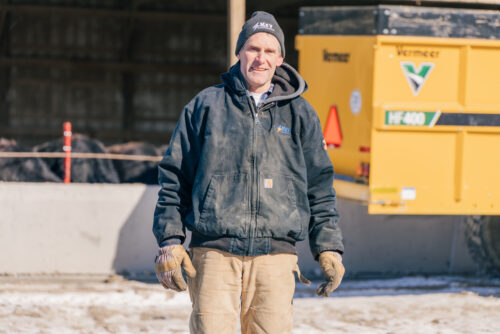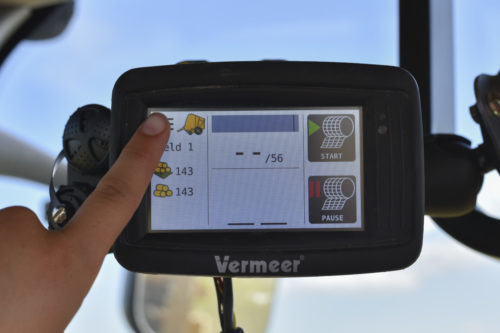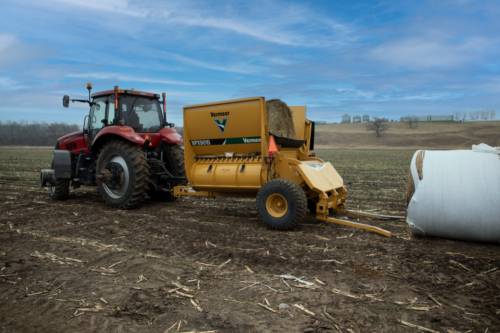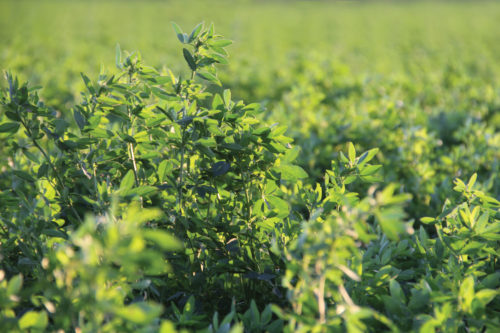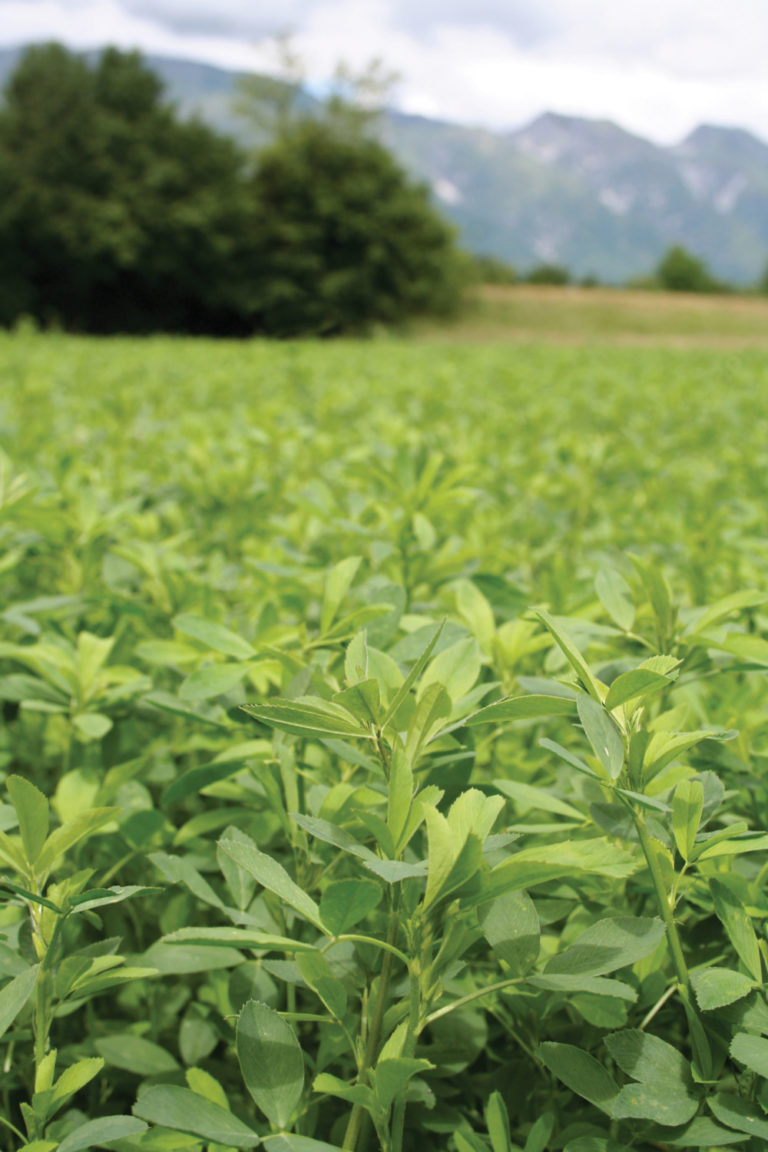
Balancing Fall Dormancy and Winter Survival in Alfalfa
January 2019
Selecting alfalfa varieties only happens every few years. Overall crop output and quality are major priorities for most producers. Yet accounting for the specific conditions in which your crop grows and assessing which varieties will perform best in those conditions is often just as important, especially when your crop is challenged by Mother Nature or the myriad of potential pests, weeds and diseases it may face during its productive life.
An alfalfa crop’s ability to survive and perform in cool temperatures is one of the traits that can be the difference between a fair and excellent crop in many northern climates. That makes both fall dormancy ratings and winter survival rates important factors to consider when selecting your next alfalfa variety — especially if you’re in a region where frost and freezing temperatures can sometimes be the culprit of tonnage or hay quality.
The relationship between fall dormancy and winter survival
There’s an inverse relationship between these two alfalfa traits. Every commercial variety available today has a fall dormancy (FD) rating that refers to its overall productivity late into the growing season. The higher the FD rating, the greater the fall growth, according to the National Alfalfa & Forage Alliance (NAFA), publisher of annual commercial alfalfa ratings.
“[Fall dormancy] is the degree of fall alfalfa growth, as a response to temperature and day length. Lower dormancy ratings exhibit less fall growth, while higher dormancy ratings indicate greater fall growth,” as stated in the 2017 NAFA Alfalfa Variety Ratings guide. “FD ratings are indices assigned by comparing the height of fall growth with standard check varieties, and tested across locations and years to accurately represent dormancy response across environments.”
A variety’s winter survival rating, on the other hand, is its ability to — as the name implies — survive the temperatures and sometimes straining environmental conditions of winter. It’s a function of how the plants manage resources later on in the growing season. Plants that have less forage output in the fall do so for a reason; instead of dedicating energy to forage growth, they’re stockpiling resources, primarily in the root system, from which to draw from to help survive prolonged winter freezing temperatures. And it’s often not just a response to temperature. Plants with a higher winter survival rating respond to day length as another factor in determining how they manage energy and resources.
“Plants that have low fall dormancy and high winter survival ratings don’t really respond to temperature. As soon as the day length gets shorter, they shut down, stop growing and send energy into taproots to help survive the oncoming winter,” said Heathcliffe Riday, research geneticist for the U.S. Department of Agriculture-Agricultural Research Service (USDA-ARS). “As you move to higher dormancy classes, they don’t respond to shortening day length and changing temperatures. They just keep growing and don’t send energy into the roots.”
Why fall dormancy matters:
As an alfalfa trait, it’s important to consider fall dormancy as it relates to your location, growing conditions and how you generally manage your crop. In its annual alfalfa ratings guide, NAFA assigns an FD value to each commercially available variety. Though NAFA scale stretches from 1 to 11, most varieties that have an FD rating are either a one or two. This typically indicates poor trait performance, Riday said. Just like with other commercial seeds and plant varieties, the suitability of alfalfa varieties typically corresponds with the producer’s geography.
“They should be growing the correct fall dormancy for their region,” Riday said. “If you’re looking for good winter survival, you’re looking for a one or two. A variety rated one has excellent winter survival, whereas a class-five variety typically means you’ll have a lot more fall growth.”
Growers in the upper Midwest, for example, are more likely to see success with varieties with lower FD ratings because that means those plants will be much more likely to have stronger winter survival.
One of many factors
Though winter survival is a major variable for the output of an alfalfa variety, it’s important to consider the measure of winter hardiness in the context of all yield-influencing factors. In its annual assessment of commercially available varieties, NAFA includes ratings for susceptibility to major diseases and pest pressures, like bacterial wilt, phytophthora root rot, blue alfalfa aphid and potato leafhopper in addition to winter survival. In order to find the best alfalfa variety for your operation, it’s important to consider all yield-influencing factors and select a variety based on the right combination of pest resistance and overall plant hardiness.
“What are your major pests? There are all sorts of factors,” said Riday, who works to improve the national alfalfa genetics pool by introducing new traits. “The grower should make his or her decision on what will grow best, the fall dormancy class and resistance to the diseases they most commonly face. Identify your major pests and what you need to raise the best crop you can.”
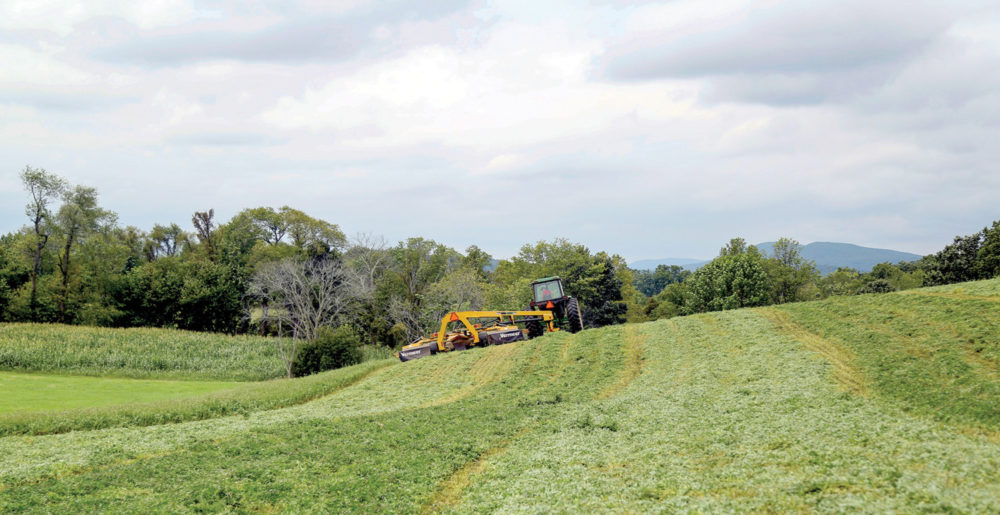
The influence of management practices
How you define that “best” crop also influences how you select alfalfa varieties for factors like fall dormancy. Depending on your marketplace and buyers, tonnage may be your highest priority. If you’re producing alfalfa for a market segment like dairy farmers, higher feed value may be the key measure of success. Fall dormancy ratings have a major influence on both tonnage and quality, and finding the right variety depends on what’s most important, especially if you’re looking to make improvements on your overall alfalfa yield.
“Producers should be growing the correct fall dormancy for their region, but if they’re looking to push their yields to try to get more fall growth and more tonnage based on what their climate permits, they should look at higher fall dormancy ratings with good winter survival,” Riday said. “But with alfalfa, it depends on what you want. Are you going for improved quality or more tonnage? Are you selling the hay or growing it for your own production? You need to ask these questions. With some varieties, you may be able to cut earlier in the growing season and get higher quality, but then your yield declines. Depending on what your market is and what you are trying to do, you have to find the right balance.”
Other management factors, like grazing and how you bale, will influence the quality and quantity of your output in ways that are directly tied to fall dormancy and winter survival. Standability and leaf retention are both important to consider if you’re weighing any sort of change in an effort to increase either the volume or quality of the alfalfa you produce.
“Higher-quality varieties will yield better forage quality, but if you are trying to extend the growing season through improved fall dormancy, standability and leaf retention can become problems,” Riday said. “If you are going to graze it, you need to account for that when selecting a new variety.”
Finally, selecting a variety for fall dormancy and winter survival is influenced by price. Higher-performing varieties will likely carry a higher price tag, and how you manage your overall alfalfa production costs will influence what is ultimately the best balance for your acres.
Are you selecting alfalfa varieties to plant in 2019? In addition to the NAFA Alfalfa Variety Ratings guide, consult your local forage agronomist or trusted advisor to find the best varieties for your operation.


